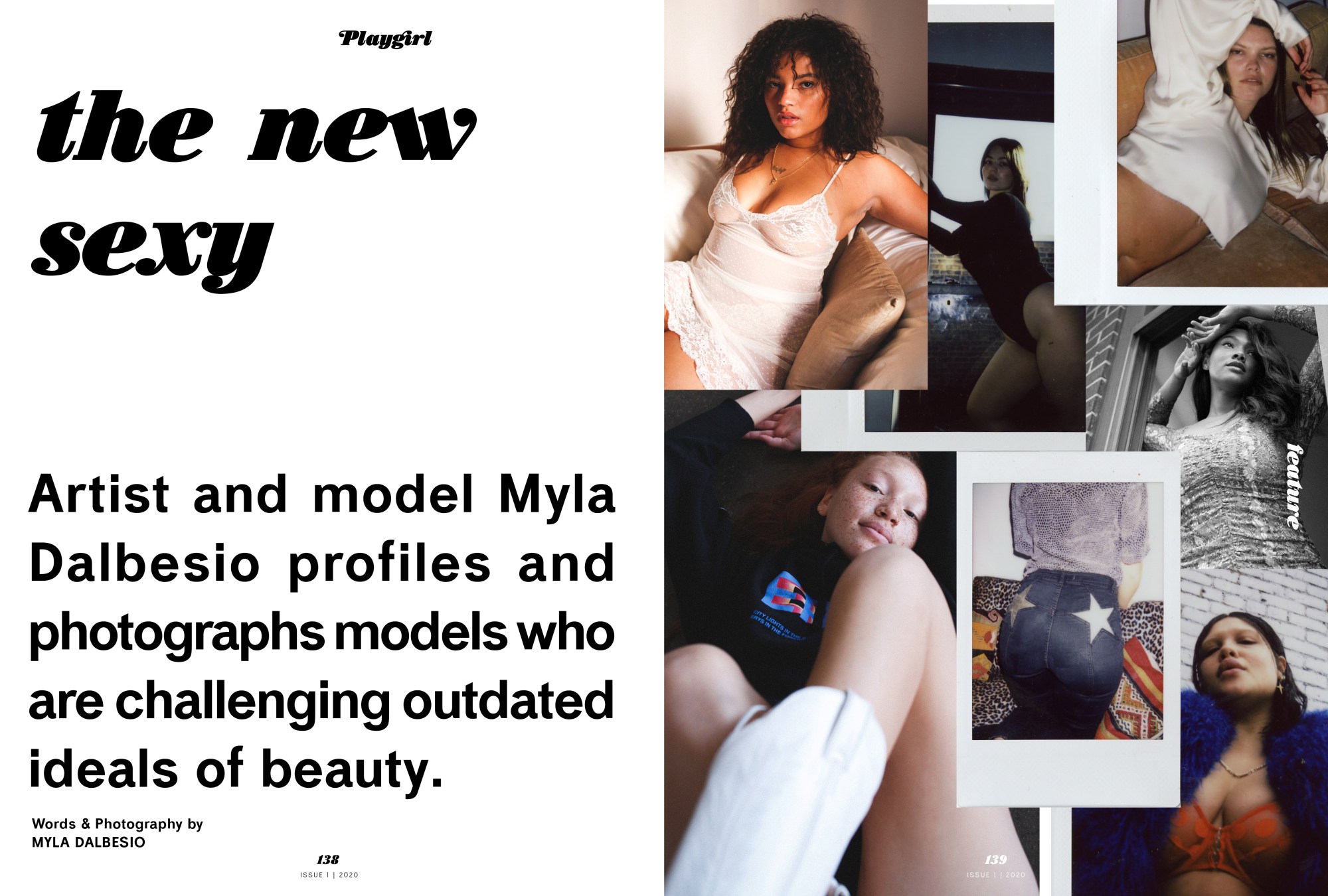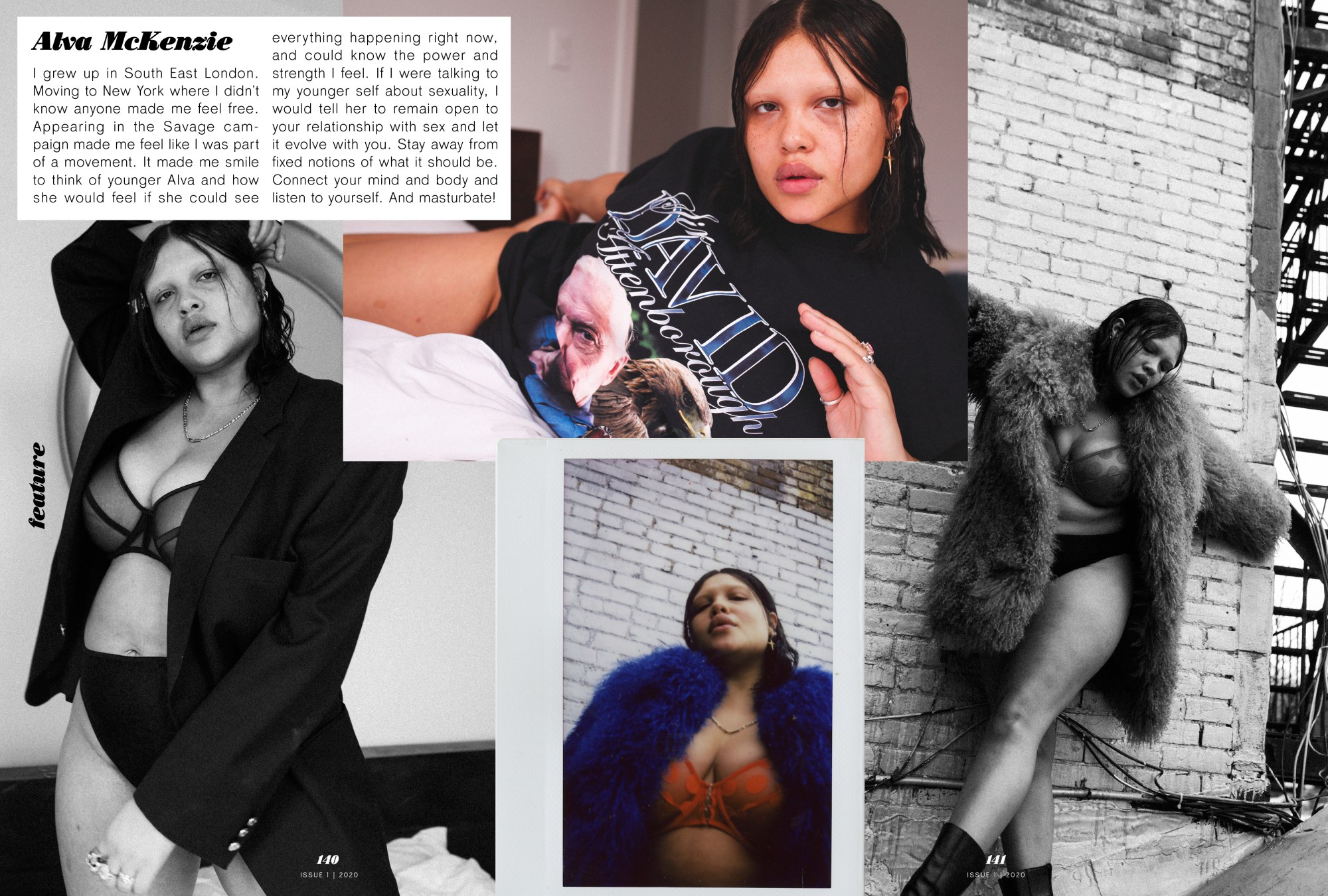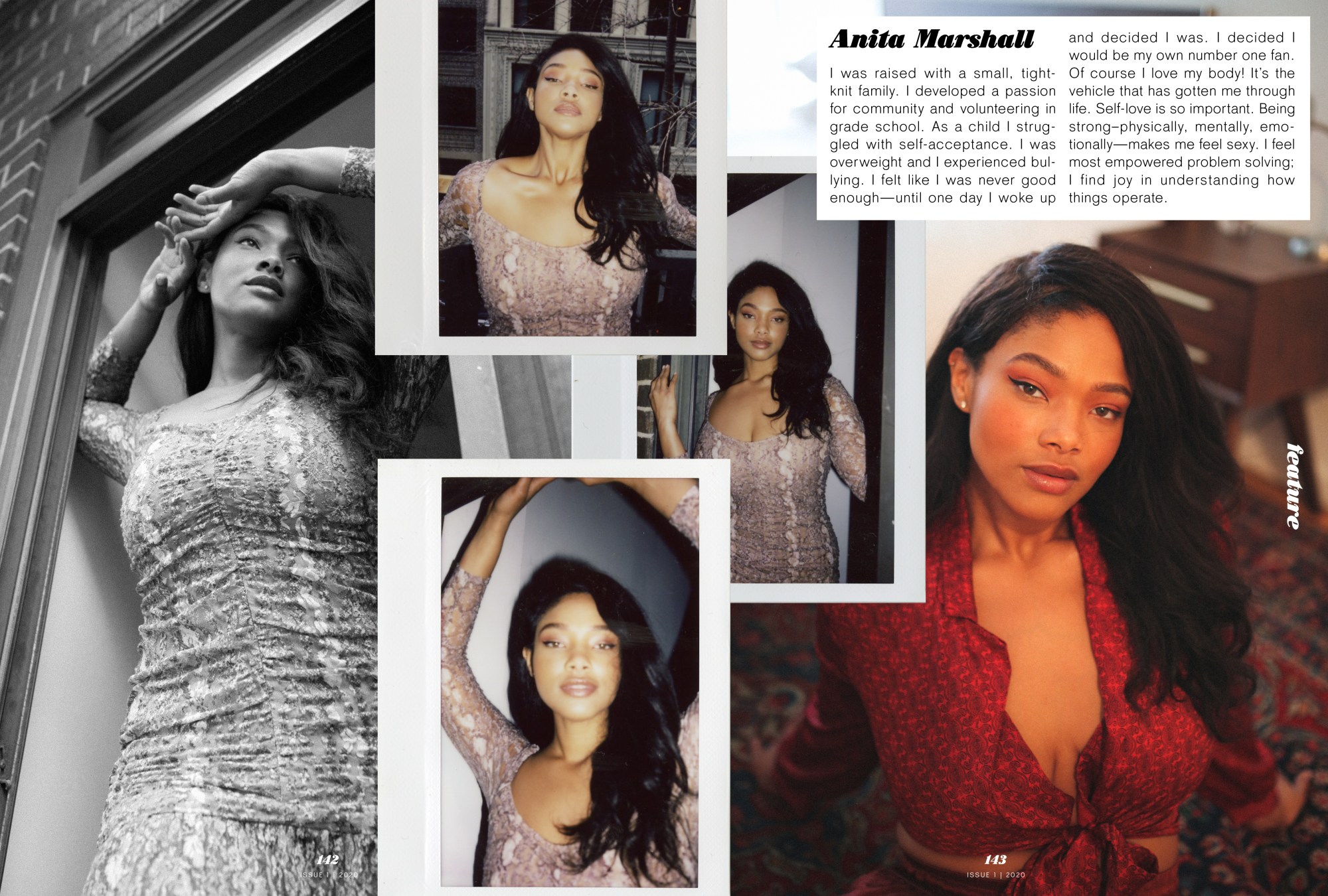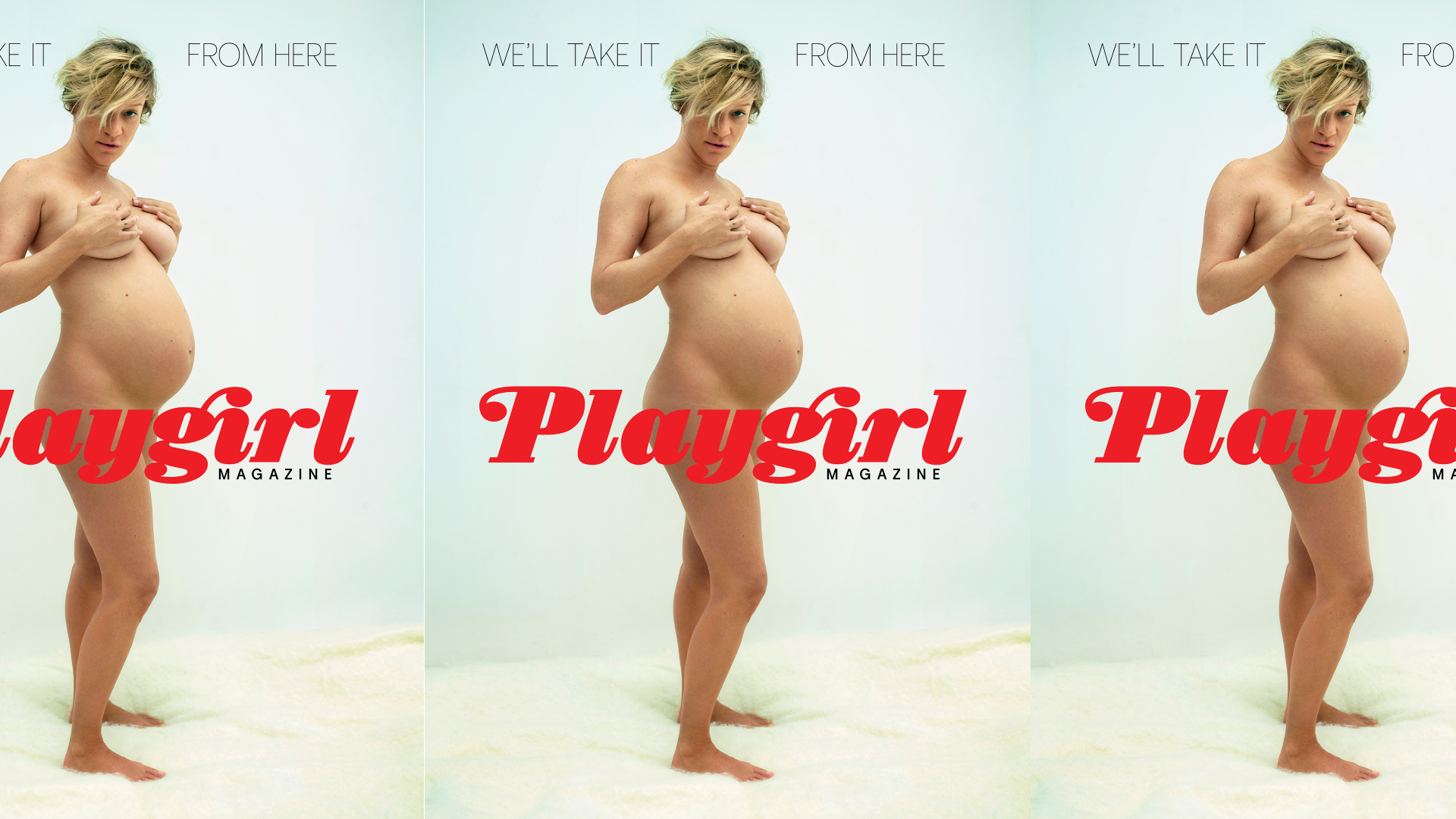It is an image you do not expect to see on the cover of Playgirl magazine: Chloë Sevigny, heavily pregnant and naked, gazing into the lens of Mario Sorrenti’s camera. There is nothing forcefully seductive here; only barefaced beauty that harbours a natural air of sexiness. It feels like a far cry from the legendary imagery of chiseled men that once defined this storied women’s title in its heyday — think handlebar moustaches, six packs and pube-framed penises — but it feels iconic all the same.
This is, after all, a Playgirl magazine for a new generation. 47 years ago when the title first launched, it was admired for its tasteful take on male nudity, and for being a delicious, feminist antidote to the objectified pictures of clothes-less women (almost always shot by male photographers) that existed in a number of titles that catered to the tasteless patriarchy. It was rebellious and brilliant, for a while at least; a fascinating reaction to the free love and feminist movements that solidified something that had long been apparent to women within their own circles: that they could be autonomous and authoritative voices on sex and their own existence. While the world battled with these issues, within its pages Playgirl had the definitive, longstanding voice on them. The photos were titillating; the storytelling colourful.
But as the internet became the go-to place for nude photography, and the growing gay readership of Playgirl shifted with it, the magazine doubled down on its salaciousness in a knee-jerk, self-owning manner. It became gossip-y and went rogue, convincing Levi Johnston, the father of Sarah Palin’s grandchild, to pose naked in the wake of Palin’s failed campaign to become the Republican party’s 2008 presidential candidate for a healthy sum of money.

For Jack Lindley Kuhns, publisher of the new Playgirl magazine, that was the most formative memory of the title growing up; a claim he’s embarrassed about now. “[They had lost sight] of what this represents — not only to people today but its future,” Jack says. And so, he began plotting that very path to Playgirl’s stunning 2020 reinvention, crafting a supreme editorial team. Skye Parrott, once a managing editor at Self-Service and a studio manager for Nan Goldin, assumes the role of Editor-in-Chief. Alex Wiederin, legendary leader of fashion titles and campaigns the world over, heads up the magazine’s creative direction.
“I always knew from the beginning, when Playgirl came into my life, that this could be so much more, and that was before I knew anything about Playgirl.” When he first acquired it in 2016, he started finding old issues of its glory days, back when it lived up to its reputation as being ‘Entertainment for Women’ as opposed to fairly straightforward porn. “I knew this magazine could be elevated in so many ways.”

The original rendition through Jack’s lens played on that old fashioned stud mindset, but as the creative team started to gather around them, a new vision came forth: a revival of Playgirl’s original DNA, only tasteful and high brow. A trashy centrefold of naked men with their flaccid dicks on show has been transformed into a beautiful, tasteful series of nude bodies of all ethnicities framed by Harley Weir. Silhouetted physiques are juxtaposed with playful erect penises, pointing at each other over a double-page spread; as deserving of space on the walls of an art gallery as they are in the pages of a woman’s magazine.
The reportage is a return to form: they’ve found powerful and relevant modern figures; akin to those feminist icons once profiled by the title. Literary features are there in abundance. In one spread, seen below, the Sports Illustrated model-slash-photographer Myla Dalbesio has profiled some of the modern women reshaping beauty standards from the inside of the industry. “It’s a woman-driven political magazine with an art-focus,” Jack says. “The cover of the last issue [in 2016] was ‘Campus Hunks of Fort Lauderdale’. Now it’s Chloë Sevigny, pregnant, photographed by Mario Sorrenti.”
Playgirl’s loosely tied (though officially unaffiliated) brother title, Playboy, made a transition in the mid-2010s that saw it remove all forms of nudity, later restoring it in a more respectful and creative form under the guidance of a predominantly women and queer-led editorial team. The appetite for nudity has not wavered, more so, the way in which it’s expected to be framed has evolved. Is Playgirl, through Jack’s eyes, still an erotic title? “Issue one needed to make a statement about what the magazine represented; one that’s 50 years old and has transformed from being really strong into…” he pauses slightly. “A joke, really. Solidifying our purpose and ideas is important, and so we needed to come out with a highly elevated visual [language], so that in the future we can make it more fun — and it’s already a fun magazine. I want to have more fun when it comes to nudity, but in a beautiful way that’s of substance. I mean, one of the hardest things [throughout this process] was that the last proof of concept was gay porn.”

And that’s what Playgirl, decades ago, was. It was estimated that, in the early 2000s, up to 50% of those buying the magazine were gay men. That’s still the case to this day: the original aesthetics of Playgirl are typical queer male nostalgia: Tom of Finland-like supercharged erotica, or “Real Men”, a section in which men would be plucked from their run-of-the-mill jobs to become temporary sex symbols in the pages of the publication. That reputation is something that Jack is worried about now. “I think that sexy or appealing nudity in regards to gay men is personal,” he says. “What Harley shot is gorgeous but sexy as well. And I spent two years going through every fuckin’ issue of the old stuff, and yeah, there will be some people disappointed by the lack of ‘hunk’ — I’m embarrassed to even say that! But at the same time, this is still just issue one. I want to make this something that’s meaningful.”
And he’s right to tread carefully. Gay porn is, after all, what brought down Playgirl’s reputation years ago. Instead, in the form of Chloe, they’ve placed a de-facto gay icon in the place of a stereotypical homoerotic archetype. Everything feels more inclusive this time around. The new Playgirl isn’t as ‘gay’ as it was before, but it’s definitely far more queer. “However you identify,” Jack insists, “I look at this like a piece of beauty, and think that it’s a feminine concept. But the publication is going to be desirable to anybody who’s interested in art or fashion.”

Relaunching a magazine years after its closure requires guts and, in some cases, an undoing of what legacy the previous rendition of the title left behind. For Playgirl, that legacy is spotty, but in the hands of Jack, as well as his editorial and creative team, the results are a magazine that speaks fully of the future. How easy it would be to create a poppy, flash-in-the-pan publication peppered with hot naked men — nostalgia for nostalgia’s sake. Instead, Playgirl has a real second chance, and a rare USP that few other new titles of its stature possess. Does Jack have a promise to the new Playgirl reader? “I don’t make promises,” he laughs. “I won’t answer and can’t answer that question. But there’s one thing I will say. My wish would be for everybody to be open-minded. And to look at the publication in a different way to what they know about it already. One of my goals was to produce something that [fitted within] the history of Playgirl, and for those who read it to recognise that.
“This is still Playgirl,” he says. “It just might be a little different.”


Playgirl Magazine is available to pre-order here.

